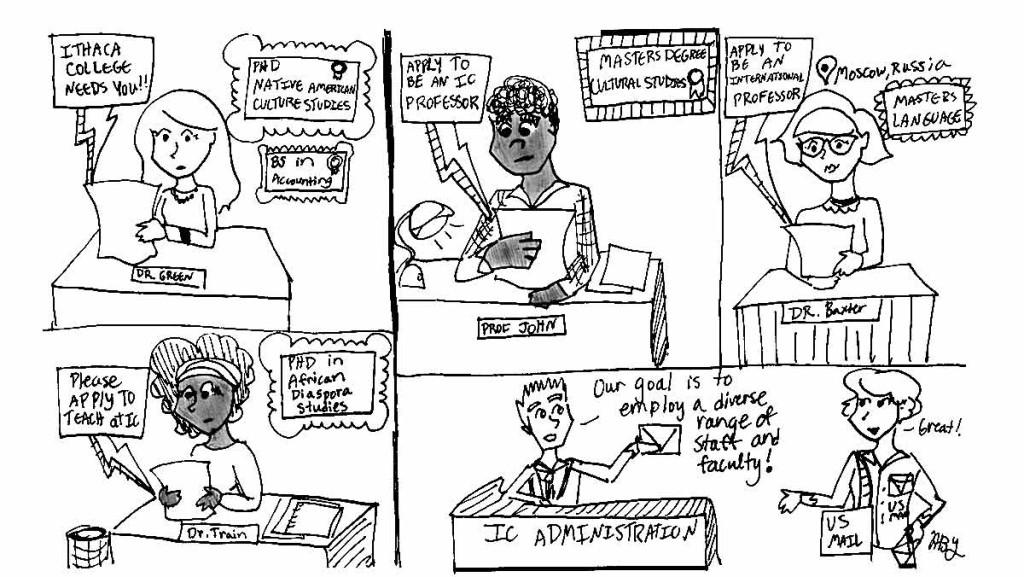Over the last nine years, racial diversity among Ithaca College faculty has increased by 3 percent. While progress is often considered positive, it should never be seen as a reason for complacency, which is why it is commendable that the administration has developed new guidelines for hiring faculty members from diverse backgrounds.
Diversity among faculty is essential to enhance the overall educational experience for all students attending college. Varied perspectives are what round out curriculums and make higher education unique and worth its steep price. A professor straightforwardly teaching what is laid out in the curriculum without any additional context does not go very far in advancing student knowledge and broadening horizons.
Instead, professors should be able to draw upon personal experiences and their own identities and apply that context to what they are teaching in order to better help students connect with the content. Without this deeper relevance, it is more difficult for students to really engage with course material.
For instance, it would not make much sense to have a Latino/a studies course taught by a faculty member who is not Latino/a, or has not been immersed in Latino/a culture, or does not understand the specific types of oppression faced by Latino/a communities. This is why last year, several students rallied around the push for the hiring of a Native American professor to teach courses within a redefined Native American studies minor. No professor better understands and is more suited to teach Native American culture and history better than one who has lived it.
This issue reaches even beyond racial and ethnic backgrounds to cross national borders. International diversity among faculty should also be increasing, especially in language and politics courses, where cross-cultural perspectives might be most beneficial. A German class taught by a professor who was born and lived in a German-speaking country will have much more to offer students in terms of teaching them about German language and culture than a professor from the United States would.
The college has been adamant about demonstrating their progress and dedications to increasing diversity among faculty. Still, a 3 percent increase is hardly enough, and the college should do everything in its power to prioritize and achieve more progress.














